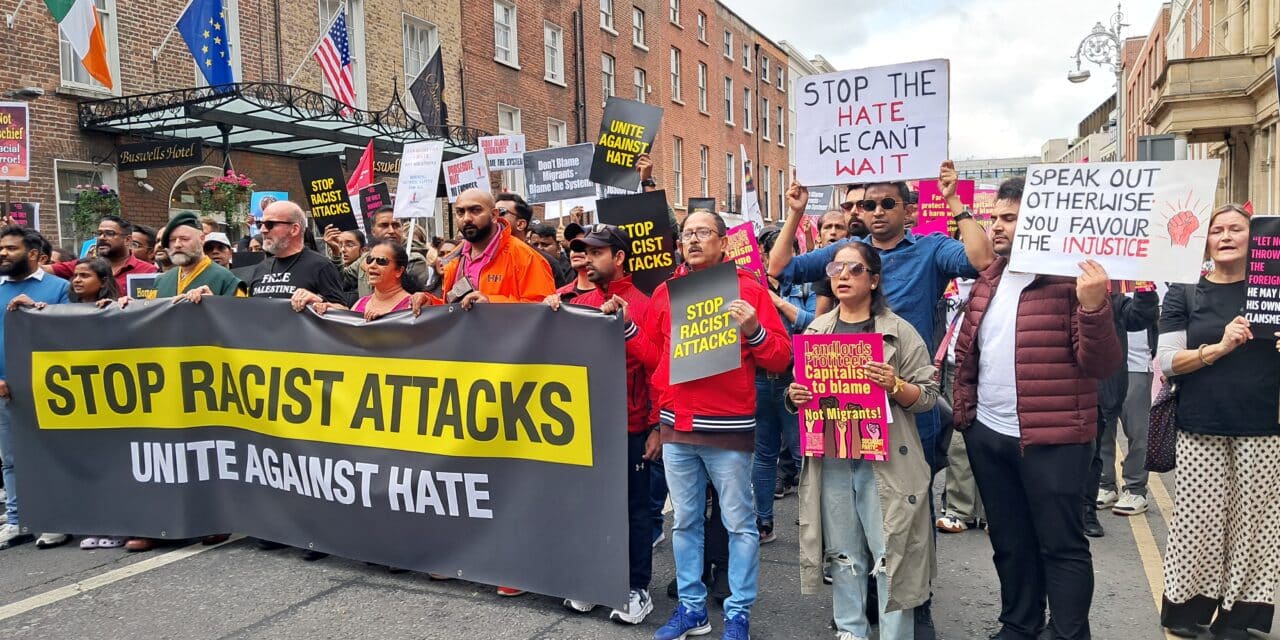Marchers call for end to racist attacks after assault on an Indian man, Dublin, Ireland, July 26, 2025 (Arpita Chowdhury)
UPDATE, JULY 31:
I write in an opinion piece for the Irish Examiner, “The Racist Attack on an Indian man in Tallaght Recently was Not a One-off. Ireland Must Act”:
This incident has heightened my safety concerns. I still believe in Ireland’s potential as a welcoming place. I’ve been embraced by Irish friends, neighbours and colleagues who have shown immense warmth.
But I now walk a little faster past certain groups. I look over my shoulder more than I used to. And I find myself worrying more for my friends and for those who are yet to arrive here. What has brought some solace during this painful time is the powerful mobilisation of the Indian community and the support from other migrant groups as well.
I conclude:
If Ireland is to truly be the country it strives to be, diverse, kind, just, then what happened in Tallaght must be the beginning of a reckoning, not just another news cycle.
I remember what several migrant communities shouted at a recent march in Dublin in condemnation of this incident: “This is not the Ireland we came to, this is not what Ireland represents.” Let’s make sure that remains true.
ORIGINAL ENTRY, JULY 28:
On a summer evening in suburban Dublin, what should have been a routine walk to the temple turned into a violent, racist nightmare for an Indian man in his 40s.
The IT professional from India had recently arrived in Ireland to work for Amazon. Just after 6 p.m. on July 19, he was attacked on Parkhill Road in Kilnamanagh, Tallaght by a group of teenagers. They left him bleeding, traumatized, and partially stripped in public view.
Within hours of the attack, graphic videos of the bloodied and distressed victim spread online. But there was also disinformation that the man had exposed himself near a playground circulated rapidly on social media and messaging apps, leading to bystanders confronting and further attacking him. >Despite the absence of facts, the narrative was amplified by far-right and anti-immigrant accounts, further stoking racial tensions. Irish police have since confirmed there is no evidence to support the claims.
“What Wrong Have I Done?”
“He kept saying, ‘My name is XXXXX, and I’m from India. What wrong have I done? Why me?’” recalled Jennifer Murray, a resident who was driving by when she saw the man surrounded by a crowd.
Murray was horrified:
There were 40 or 50 people watching, filming. No one had called an ambulance. His forehead was split open, he was drenched in blood, and yet people were shouting he’d exposed himself.
It was obvious — he had been attacked. His trousers weren’t down by choice. They were taken.
She wrapped the IT specialist in one of her child’s blankets from her car, called emergency services, and remained with him until Gardaí arrived almost 30 minutes later. Her intervention went viral, drawing widespread praise and bringing much-needed clarity to a situation warped by disinformation and racial profiling.
Murray spoke further on the Opinions Matters podcast about the need to rebut the falsehoods.
The people at the playground did see a man — very clearly not a white-skinned man — with no clothes on, near
the vicinity of a playground. They were right about that.But what they didn’t see — and what might have been more obvious had he been white-skinned — was that he was soaked in blood, physically scarred for life, and left for dead. He’d been brutally beaten, unprovoked, by a gang of teenagers before that moment.
Responses from Police and Indian Embassy
Ireland’s police force, An Garda Síochána, initially said in a statement that they attended the scene of an incident” in the suburb of Tallaght. A male, aged in his 40s, was taken to Tallaght University Hospital with injuries..
But in an update last week, Gardaí officially acknowledged that they “recorded this incident as racially motivated and it is being investigated as such”.
The Embassy of India said in its statement that it was in touch with the victim and his family, offering all necessary assistance, and with the Irish authorities.
Ambassador Akhilesh Mishra told the Indian outlet The Hindu that “the horrible attack has naturally caused widespread concern and fear in the local Indian community”. Last Wednesday, he met with a delegation from the Indian community in Ireland. Acknowledging the trauma and fear felt by audience members, he explained that the Embassy has requested guidance for incoming students, focused on safety and local support networks.
Two Dublin councillors contacted senior Irish officials, including the Taoiseach (Prime Minister) Micheál Martin and Tánaiste (Deputy Prime Minister) Simon Harris, requesting dialogue with the community. Expressing solidarity in an e-mail to Councillor Supriya Singh, Harris said he had raised the “disgusting” incident with the Justice Minister.
Singh emphasized, “Hate has no place in our communities — and we must stand united in calling it out.” Councillor Punam Rane is pursuing a meeting with the Justice Minister when the Irish Parliament reconvenes in September.
Marching Against The Attack
Silent protests and vigils culminated in a rally in Dublin last Saturday. Approximately 600 people marched from City Hall to the lower house of Parliament, the Dáil Éireann. Organized by trade unions and migrant rights groups, the protest gathered healthcare workers, students, and families.
Demonstrators carried signs and chanted, “Stop the violence, stop the hate”; “Racism no more”; “Racist violence off the streets”; and “Say it loud and say it clear, migrants are welcome here”.
Member of Parliament Ruth Coppinger testified:
This is not an isolated case. Over the past week, I’ve heard from people across migrant communities describing similar attacks that went unreported, and a pattern of slow or insufficient Garda response. We need systemic change.
Varghese Joy of Migrant Nurses Ireland hailed a “historic mobilization” and said the community is “no longer willing to stay silent”.
[REPORT 1/2] Hundreds (approx. 600) marched in Dublin from City Hall to Dáil Éireann to condemn the racist assault of an Indian national in Tallaght few days ago. Trade unions & migrant groups joined forces to raise their voice. #Tallaght #Dublin #EndRacism #march pic.twitter.com/3WqBITm5fO
— Arpita chowdhury (@Arpitapv3129) July 26, 2025
Trauma, Silence, and a Demand for Change
The victim, recovering at his Dublin residence, has declined all contact with media or community visitors. Amazon Ireland, his employer, is providing full support and assistance.
Leaders in the Indian community are compiling evidence of past racial attacks for a formal report to be submitted to both the Irish and Indian governments. The Special Rapporteur on Racial Equality and Racism in Ireland, Dr Ebun Joseph, explained:
This is not just an isolated act of violence. It is the consequence of a climate of racism that has been allowed to grow, nurtured by disinformation, emboldened by silence, and enabled by a failure to fully reckon with the reality of racism in Ireland today.
While the Garda investigation continues, the broader conversation has moved beyond a single incident. For many in Ireland’s migrant communities, the attack in Tallaght has become a rallying point for recognition, accountability, and safety.
Data published by An Garda Síochána shows a 12% increase in hate-related incidents reported in Ireland between 2022 and 2023, with most linked to the victims’ ethnicity or nationality. The force adds that hate-related crime is under-reported.
“This isn’t about Irish versus Indian,” said a speaker at the recent community meeting. “It’s about the safety of the whole society against anti-social elements that create discord and spread hate.”
Varghese Joy adds, “This is not the Ireland we came into, this is not what Ireland represents. This is our home and
we need to take collective action.”

